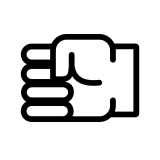In today’s dynamic business environment, the terms “processes” and “procedures” are often used interchangeably. However, they serve distinct roles in ensuring the smooth functioning of any organization. Understanding these concepts and their significance can be the key to unlocking unparalleled efficiency and effectiveness within a business.
Definition of Processes and Procedures
- Processes: A process is a series of related tasks or activities that, taken together, achieve a specific outcome or goal. It offers a high-level view of how different tasks interact to produce a result. For instance, the “hiring process” encompasses everything from job posting to onboarding a new employee.
- Procedures: A procedure, on the other hand, is a detailed, step-by-step guide on how to perform a specific task within a process. It provides the “how-to” aspect. Using the hiring example, a procedure might detail the exact steps HR should follow when conducting an interview, such as the questions to ask or the paperwork to complete.
Importance in Organizational Efficiency
Processes and procedures form the backbone of any organization, regardless of its size or industry. Here’s why they are indispensable:
1. Consistency: With clear processes and procedures in place, organizations can ensure tasks are completed consistently, leading to predictable and high-quality outcomes.
2. Training: New employees can be onboarded more efficiently with a clear procedure to follow, reducing the learning curve and ensuring they quickly become productive team members.
3. Accountability: Clearly defined roles within a process mean everyone knows their responsibilities, promoting accountability and ensuring no tasks are overlooked.
4. Continuous Improvement: A clear understanding of current processes and procedures allows organizations to identify areas for improvement, leading to ongoing optimization and growth.
While processes provide the roadmap to organizational goals, procedures offer detailed directions. Together, they form the foundation upon which successful and efficient organizations are built. To truly grasp their significance, let’s explore examples that highlight their unique characteristics and roles.
Examples of Processes and Procedures:
| Processes | Procedures |
|---|---|
| Hiring Process: Encompasses everything from job posting to onboarding a new employee. | 1. Job Posting Procedure: Steps to draft, approve, and publish a job vacancy. 2. Interview Procedure: Guidelines on conducting interviews, including question sequences and evaluation criteria. 3. Onboarding Procedure: Steps to introduce a new employee to the company, including orientation and paperwork. Note: There are more procedures within the hiring process. |
| Product Development Process: From conceptualization, design, testing, to final production. | 1. Conceptualization Procedure: Steps to brainstorm, research, and finalize a product idea. 2. Design Procedure: Guidelines on drafting, prototyping, and revising product designs. 3. Quality Assurance Procedure: Specific steps to test a product, including tools, parameters, and documentation. Note: Several other procedures exist within product development. |
| Customer Service Process: The journey from receiving a customer query to resolving it. | 1. Receiving Query Procedure: Steps to log, categorize, and assign customer queries. 2. Handling a Complaint Procedure: Guidelines on listening, documenting, and escalating complaints 3. Feedback Collection Procedure: Steps to gather, analyze, and implement customer feedback. Note: The customer service process includes additional procedures. |
| Event Planning Process: From conceptualizing an event to its successful execution. | 1. Venue Selection Procedure: Steps to identify, evaluate, and book a venue. 2. Invitation Procedure: Designing, printing, and distributing event invitations. 3. Vendor Coordination Procedure: Guidelines for selecting, negotiating with, and managing vendors (caterers, decorators, etc.). Note: Several other procedures are involved in event planning. |
| Inventory Management Process: Overseeing the flow of items into and out of stock. | 1. Stock Replenishment Procedure: Steps to assess stock levels and reorder products. 2. Damaged Goods Handling Procedure: Guidelines for inspecting, reporting, and disposing of damaged inventory. 3. Inventory Auditing Procedure: Regular checks to ensure physical stock matches system records. Note: Inventory management encompasses more procedures. |
| Budgeting Process: Planning and overseeing an organization’s financial resources. | 1. Expense Tracking Procedure: Steps to record, categorize, and review expenses. 2. Revenue Forecasting Procedure: Predicting incoming funds based on historical data and market trends. 3. Budget Approval Procedure: Guidelines for reviewing and approving the final budget. Note: The budgeting process has additional procedures. |
| Maintenance Process: Ensuring equipment and facilities are in good working condition. | 1. Routine Inspection Procedure: Regular checks to identify wear and tear. 2. Repair Procedure: Steps to diagnose, report, and fix equipment issues. 3. Preventive Maintenance Procedure: Scheduled actions to prolong equipment life and prevent breakdowns. Note: Maintenance involves more detailed procedures. |
| Marketing Campaign Process: Creating and executing a plan to promote a product or service. | 1. Market Research Procedure: Gather and analyze data about target audiences and competitors. 2. Content Creation Procedure: Steps for designing ads, writing copy, and producing media. 3. Performance Analysis Procedure: Evaluating campaign results against set objectives. Note: Marketing campaigns consist of numerous other procedures. |
Procedures and Tasks
At the heart of any organizational operation is a procedure, a series of steps designed to achieve a specific outcome. Each step within a procedure is essentially a task – an individual action or activity that needs completion. If a procedure is a walk, tasks are the footsteps that comprise that journey.
Managing individual tasks can become overwhelming, especially in large-scale operations. Workanizers.com introduces a novel concept: the TaskPack. This innovative approach reimagines how we perceive and manage tasks, streamlining the execution of procedures.
What is a TaskPack?
A TaskPack is a cohesive bundle of tasks, grouped based on certain criteria or objectives. Think of it as a mini-project or a module within a larger procedure. The beauty of a TaskPack lies in its encapsulation. Grouping tasks makes them easier to assign, manage, and track.
The Anatomy of a TaskPack
- Interconnection: TaskPacks link through “input” and “result” tasks, bridging the flow between them within a procedure.
- Encapsulation by Rules: TaskPacks follow specific rules:
– Each TaskPack is assigned to one Doer, ensuring accountability.
– They are designed for execution within a day, making tasks manageable and maintaining procedure momentum.
Advantages of TaskPacks
- Scalability: As procedures become more complex, TaskPacks simplify task management.
- Accountability: Clear responsibility with designated Doers.
- Structured Execution: They offer an organized approach, easing monitoring and adjustments.
In essence, TaskPacks from Workanizers.com streamline the journey from procedures to task completion, offering organizations a precise tool for efficient task management.
Best Practices for Designing Processes and Procedures
When designing processes and procedures, consider the following best practices:
1. Involving Relevant Stakeholders
- Collaborative Input: Engage individuals from various departments or roles directly impacted by the process or procedure. Their insights can provide a holistic view and address potential challenges.
- Feedback Loops: Establish mechanisms for continuous feedback. Stakeholders can offer valuable suggestions for improvements based on their hands-on experience.
2. Keeping Documentation Clear and Concise
- Simplicity is Key: Avoid jargon and complex language. The goal is to make documentation easily understandable for everyone, regardless of their expertise level.
- Use Visual Aids: Platforms like Workanizers.com offer tools and features that can automatically represent and manage processes visually, enhancing clarity and ease of use.
3. Regularly Reviewing and Updating
- Stay Relevant: Business environments are dynamic. Regular reviews ensure processes and procedures remain relevant and effective amidst changing circumstances.
- Incorporate Feedback: Use stakeholder feedback and performance metrics to refine and optimize processes and procedures over time.
4. Using Workanizers
- Embrace TaskPacks: As introduced by Workanizers.com, TaskPacks can simplify task management by bundling related tasks, making them more manageable and ensuring clear accountability.
- Streamline with Interconnections: Use the “input” and “result” tasks feature of TaskPacks to ensure seamless transitions between different stages of a process.
- Monitor and Adjust: The structured approach of Workanizers allows for easier monitoring of task execution, making it simpler to identify areas for improvement and implement necessary adjustments.
As we’ve explored various examples, the significance of processes and procedures in organizational structures becomes undeniably clear. These frameworks, illustrated through the examples provided, are the backbone of any successful operation, ensuring consistency, efficiency, and clarity in every task undertaken.
However, it’s crucial to remember that the business landscape is ever-evolving. While the examples given offer a snapshot of best practices, the real challenge lies in adapting and refining these processes and procedures to meet each organization’s unique demands. Continuous improvement isn’t just a best practice; it’s a necessity in today’s dynamic environment.
In closing, let the examples provided serve as a foundation. Build upon them, iterate, and always strive for excellence. Embrace the lessons they offer, but also be open to forging new paths and setting fresh examples for others to follow.
FAQ
1. What’s the difference between a process and a procedure?
- A process is a series of related tasks or activities that achieve a specific outcome or goal. It provides a high-level view of how tasks interact to produce a result. A procedure, on the other hand, is a detailed, step-by-step guide on how to perform a specific task within a process.
2. Why are processes and procedures important for organizations?
- They ensure consistency, facilitate training, promote accountability, and enable continuous improvement, leading to organizational efficiency and effectiveness.
3. Can you give an example of a process and its corresponding procedures?
- The “Hiring Process” is an example of a process. Within this process, there are procedures like the “Job Posting Procedure,” “Interview Procedure,” and “Onboarding Procedure.”
4. What is a TaskPack as introduced by Workanizers.com?
- A TaskPack is a cohesive bundle of tasks, grouped based on certain criteria or objectives. It’s like a mini-project or module within a larger procedure, making tasks easier to assign, manage, and track.
5. How do TaskPacks help in task management?
- TaskPacks offer scalability, clear accountability, and structured execution. They simplify task management, especially as procedures become more complex.
6. What are some best practices when designing processes and procedures?
- Some best practices include involving relevant stakeholders, keeping documentation clear and concise, regularly reviewing and updating the processes and procedures, and using platforms like Workanizers.com for efficient task management.
7. How often should processes and procedures be reviewed?
- While there’s no fixed frequency, it’s essential to review them regularly to ensure they remain relevant and effective in the face of changing business environments.
8. Why is stakeholder involvement crucial when designing processes and procedures?
- Stakeholders can provide a holistic view and address potential challenges, ensuring the processes and procedures are comprehensive and effective.
10. How does continuous improvement relate to processes and procedures?
- With a clear understanding of current processes and procedures, organizations can identify areas for improvement, leading to ongoing optimization and growth. Continuous improvement ensures that these frameworks remain relevant and effective over time.

